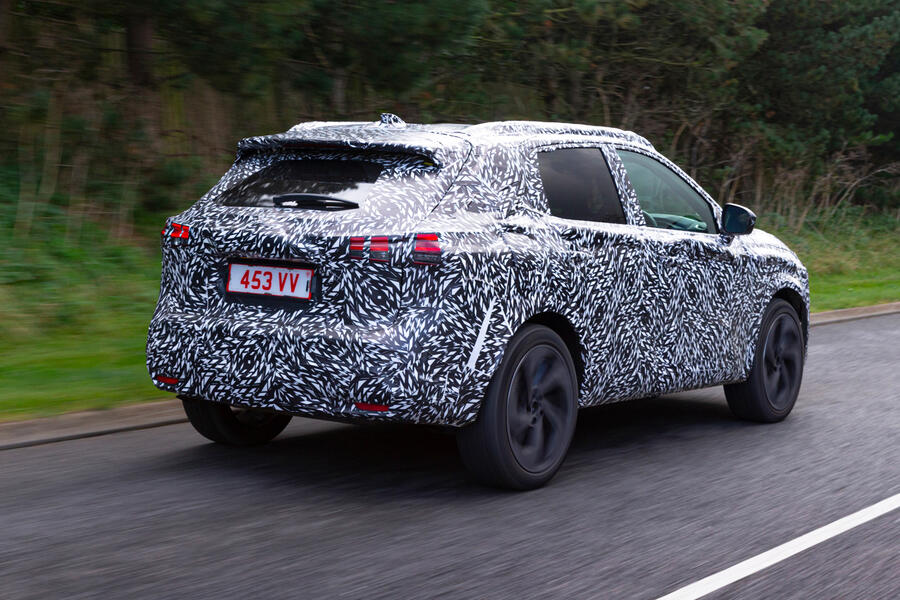Nissan is building up to the launch of a new generation of its Qashqai best-seller and has revealed key details ahead of the car’s debut early next year.
The third iteration of what the brand terms its “pioneering” crossover aims to build on its segment-leading success, with more than three million examples of the first two generations sold across Europe and five million globally.
It will use a new platform, is designed, engineered and built in the UK and, for the first time, won’t feature a diesel engine. The Japanese manufacturer has released only disguised prototype shots and a preview image zoomed in on the headlight detail of the new model. However, the prototype images show that the overall profile of the new car is familiar. The front end has been inspired by the design of the new Juke, albeit with a less radical interpretation.
Nissan Europe product planning boss Marco Fioravanti claims the overall design objective has been to offer “the best stance in the segment”, with a “more muscular yet dynamic image”. A wider track, bigger-diameter wheels and a stronger shoulder line are claimed to enable this.
The new car is bigger than today’s, but not significantly so to ensure that it remains a true C-segment model. It’s 35mm longer, with 20mm of that length added to the wheelbase and the rest in the front overhang. It’s also 32mm wider and, unusually, 25mm taller thanks in part to an increase in the Qashqai’s ride height. The boot is 50 litres larger than the outgoing model’s, too.

Underpinning the Qashqai is a new version of the Renault-Nissan-Mitsubishi Alliance’s CMF-C platform, overhauled to enable greater electrification. Nissan says it allows a reduction in weight but an increase in stiffness – key to improving both efficiency and dynamics.
The platform uses a greater proportion of ultra-high strength steel than the old car’s (up from 20% to 30%) and the underfloor structure is more rigid as Nissan aims for the highest possible safety rating in the imminent, more stringent crash tests. There is also structural bonding in key body joints to improve strength further. Overall stiffness is up 41% on the outgoing car.
Despite all this, Nissan has reduced the weight of the car’s body-in-white by 60kg. Contributing to this is the use of composite materials for the bootlid and fuel cap, while using aluminium for the doors and bonnet has saved 21kg.
The suspension layout is familiar. For two-wheel-drive Qashqais with wheels up to 19in, a torsion beam rear set-up is used. Four-wheel drive models and those with 20in wheel get a multi-link arrangement.

Add your comment